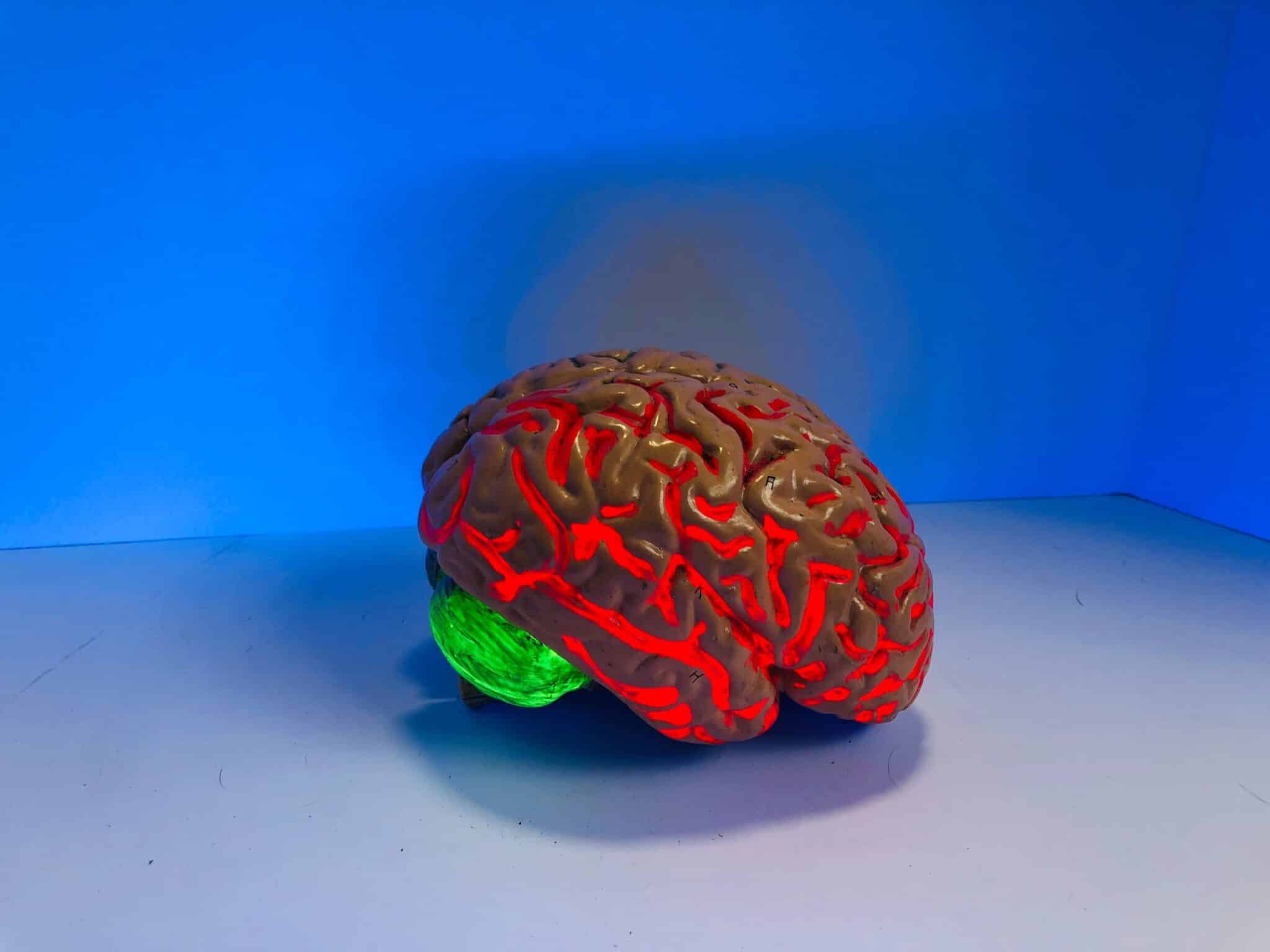Helping someone with dementia who has apraxia

Here are the 7A’s:
- Anosognosia loss insight
- Amnesia loss of memory
- Aphasia loss of language
- Agnosia loss of recognition
- Apraxia loss of purposeful movement
- Altered perception loss of perceptual acuity
- Apathy loss of initiation
What is apraxia?
Apraxia is one of the most common cognitive issues seen in dementia. Apraxia is often associated with agnosia (loss of recognition) and/or aphasia (loss of language). The person is unable to perform tasks or purposeful movements when asked, even though they:
- understand the request or command
- are willing to perform the task
- have the muscles needed to perform the task work properly
- have already learned the task
Types of apraxia, with examples
There are many different types of apraxia the person can experience because of the changes in the brain. The most common include:
- Ideomotor apraxia is the inability to make the proper movement in response to a verbal command despite having intact knowledge of tasks. Symptoms of ideomotor apraxia include:
- Inability to make physical movements when asked (e.g. might be able to describe how to use a spoon, but not able to demonstrate the actual use)
- Inability to imitate a physical gesture (e.g. waving when prompted)
- Inability to hold an object as it is intended (e.g. combs hair with wrong side of comb)
- Mistaking one object for another and using the objects incorrectly (e.g. holds a screwdriver like a pen to write)
- Ideational apraxia is the inability to correctly coordinate or carry out activities in a sequence of actions that multiple and complex step task,s such as dressing, eating, and bathing. The person may:
- complete actions in incorrect orders, such as buttering bread before putting it in the toaster or putting on shoes before putting on socks.
- Say ”no” to a suggested task or activity, not necessarily because they don’t want to do it, but because they don’t know how to perform the task or know what specific steps to take.
- lose the idea behind what a specific tool or object was used for in the past (e.g. a utensil).
- Buccofacial apraxia (also orofacial apraxia) is the inability to carry out facial movements on command involving the face, mouth, tongue, larynx, and pharynx. They may have difficulties doing things like:
- licking lips, whistling, coughing, blowing a kiss or blowing out a candle.
- opening the mouth to a spoon or moving food from the front to the back of the mouth. Swallowing difficulties can happen with these voluntary actions.
- Verbal apraxia (also apraxia of speech) is the difficulty coordinating mouth and speech movements. This differs from aphasia (one the 7A’s). Aphasia is language deficit in understanding or using words. With verbal apraxia, the person has a hard time making the necessary muscle movements to produce clearly articulated speech. The person may have problems such as:
- saying sounds correctly like the word “chicken” being used in place of the word “kitchen”.
- Limb-kinetic apraxia is the inability to make fine, precise movements with extremities-arm, leg, finger and hand movements. The person may:
- be slow and awkward in the movement of their limb
- experience loss of finger dexterity
- have difficulty with push-button items, remote controls, microwaves, touch-tone phones, typing on a computer, tying shoes or buttoning shirts.
- Gait apraxia is a motor planning deficit in mobility. Persons with gait apraxia have a hard time getting started with walking. These walking difficulties, which can increase the risk of falls, may include:
- short strides
- shuffling gait
- crossing of legs when standing
- problems with starts and turns, foot placement too far forward (which can affect balance)
Apraxia and caregiver dependence
As the above indicates, apraxia significantly decreases the person’s ability to perform basic day-to-day activities. As the dementia progresses, the person becomes increasingly dependent on the caregiver.
It can be frustrating and upsetting for the person with dementia and the caregiver when help is needed with everyday tasks like using utensils or getting dressed.
If it is unclear exactly what type apraxia the person is experiencing, jot down a list of the difficulties encountered with their activities of daily living and discuss this list with a health care professional. Knowing the type of apraxia can help to work on strategies to support the person. There are ways to help with everyday tasks that can reduce frustration and stress for both the caregiver and the person with dementia.
Getting dressed: how to help
- Give short, simple instructions for each step required
- Minimize distractions that compete for attention
- Demonstrate the action required
- Set out clothes in the correct order to help them dress independently
- Use adaptive clothing, rather than buttons and zippers. Hidden magnets or Velcro can be used for garment and footwear closures.
- Consider a home support worker to help with personal care like grooming and dressing
Any caregiver dealing with someone with apraxia is going to need ample time and patience. The person may need to be repeatedly shown the task/activity as showing them once will rarely do it.
If the person does not get what you are asking them to do, sometimes it is best to set aside the task and return to it at another time. Repeating the task over and over again, without a positive response or any success, will only serve to distress everyone and may lead to emotional reactions.
Ways a health care professional can help
Professionals such as occupational therapists, physiotherapists, speech-language pathologists or recreational therapists can help family caregivers adapt and adjust as needed. Finding alternative ways to do daily tasks can reduce frustration levels for caregivers and those receiving the care. Here are some examples of how a professional can help:
- Montessori-based dementia activities. These activities use rehabilitation principles including guided repetition, task breakdown, and progressing from simple to complex failure free tasks.
- Physiotherapists can help with at home exercise programs which consist of muscle strengthening, gait and balance training
- Modifications of home environment (declutter furniture, install grab bars and railings).
- Speech-language pathologists can provide an Oral reading activity for apraxia of speech that can be practiced at home.
- Professionally trained personal support workers or therapy assistants can offer restorative/re-enablement techniques .
- Occupational therapists can assess the need for assistive technology such as a safety system e.g. automated lights, shut-off devices, fall detectors, or to maintain skills using electronic games and apps.
The goal is to provide a solution‐focused approach to manage the everyday challenges that result from apraxia. Understanding the nature of apraxia in dementia can make a big difference in both quality of care and quality of life.
What type of apraxia have you observed or experienced as a caregiver?









Struggling to help diagnose my younger brother 61 yrs, Dev Disab now 2 yrs LTC and declining 300% . Covid to boot, private small room, 3 hip replacementsin 11 yrs= ,hard farm work & Arthritis . Also bad spine.no treatments.
Lived on farm w parents 53 yrs.
Sits in chair all dsy- which hes never done in life , nor seen any family ever do. Incontinent, but can go bathroom-doesn’t and PSWs rarely take him. He looks drugged all time- Drs giving sedation for anxiety- I dont like. He cannot open his eyes to talk or do Facetime. Stopped phoning family & friends 99%. Stopped answering answer phone 70%. Lethargic 95% only eats. No one is investigating but me , his sister. Helppp
Hi Diane,
It sounds like your brother is most fortunate to have you looking out for his wellbeing. There are a couple of options. There is Bill of Rights for residents in long-term care. Here is a link for that: http://www.advocacycentreelderly.org/appimages/file/Every%20Resident%20-%20Bill%20of%20Rights.pdf.
You can also reach out to the Advocacy Centre for the Elderly, at (416) 598-2656. They may be able to help set out your options.
You can also ask to speak to the social worker, if there is one at your brother’s LTC facility. If not, you could call the LTC, and ask to speak to an administrator about your concerns.
Again, your brother if most fortunate to have you in his court, so to speak.
Take good care, Jane
My husband has Alzheimer’s and besides some other traits, he displays Gait Apraxia as demonstrated by his shuffling gait. He was always a great walker. Walked for miles at a time. Now he tires easily and can’t go very far very fast.
Hi Gabrielle,
Oh, that is a tough thing to adjust to as a caregiver-seeing such a dramatic change. Thanks for sharing, as others can likely relate.
Take good care, Jane
Thank you so much for this summary. My 89 year old Mom just started having episodes of verbal apraxia. It lasts about 10 minutes, then her brain resets and she’s okay. The first time was very scary.
Hi there MBM,
Glad to hear it was helpful. It sure is scary the first time, especially if you don’t understand what is happening. Thanks for sharing.
Awsome man you have just created a very nice content. keep the good work up